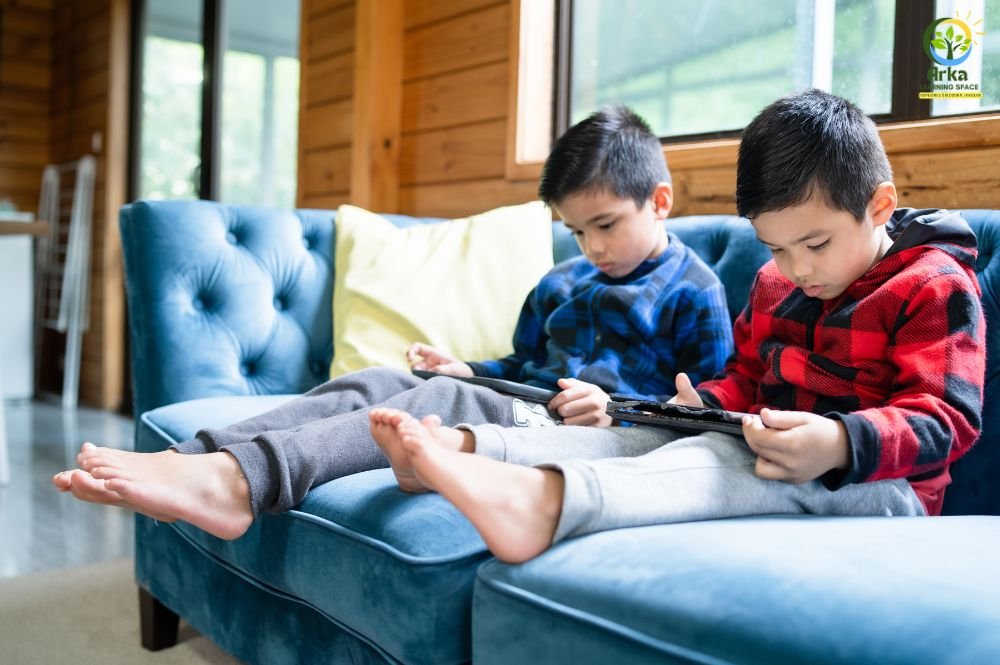In today’s digital world, screens are everywhere, from TVs and tablets to mobile phones. While technology has its benefits, excessive screen time can impact a preschooler’s development. So, how can parents find the right balance? Let’s explore screen time guidelines for preschoolers and how to set healthy boundaries.


Why Screen Time Needs Limits
Excessive screen time in early childhood can affect:
- Brain Development: Too much screen exposure may interfere with cognitive growth.
- Social Skills: Screen time can reduce face-to-face interactions, affecting communication abilities.
- Sleep Patterns: Exposure to screens before bedtime can disrupt sleep.
- Physical Activity: More screen time often means less outdoor play and exercise.
This doesn’t mean screens are all bad! When used wisely, they can be a great tool for learning and entertainment.
Recommended Screen Time Guidelines for Preschoolers
According to experts, including the American Academy of Pediatrics (AAP), here are healthy screen time guidelines for preschoolers:
- Ages 2-5 years: No more than 1 hour per day of high-quality, educational content.
- Under 2 years: Avoid screen time, except for video calls with family.
- Screen-free zones: Keep meal times and bedrooms screen-free to encourage better habits.
- Co-viewing with parents: Engage with your child while watching content to enhance learning.
How to Set Healthy Screen Time Boundaries
Here are some practical ways to manage screen time for preschoolers:
1. Create a Daily Routine
Set a predictable schedule that includes playtime, learning, meals, and outdoor activities. Make screen time a planned part of the day rather than a go-to activity.
2. Encourage Interactive Content
Choose educational apps, storytelling videos, and creative games over passive watching. Look for content that promotes learning, problem-solving, and language development.
3. Lead by Example
Children imitate adults. If parents reduce their own screen time, kids will naturally follow. Engage in screen-free family activities like reading books or playing together.
4. Set Tech-Free Zones
Establish screen-free areas in the house, such as dining tables and bedrooms, to improve family bonding and sleep quality.
5. Use Parental Controls
Monitor and limit the type of content preschoolers watch using parental controls and kid-friendly apps.
6. Prioritize Outdoor Play
Encourage physical activities like running, cycling, or playing traditional games to keep kids active and healthy.
7. Avoid Screens Before Bedtime
Turn off screens at least one hour before bedtime to help children sleep better and maintain a natural sleep cycle.
FAQs About Screen Time for Preschoolers
Q1. Is screen time always harmful for preschoolers?
Not necessarily. Educational and interactive content in moderation can be beneficial. The key is balance.
Q2. How do I reduce my child’s screen time?
Start by setting a schedule, encouraging outdoor play, and offering screen-free alternatives like books and creative activities.
Q3. What kind of screen content is best for preschoolers?
Look for educational shows, interactive apps, and creative games that promote learning and engagement.
Q4. Can screen time affect sleep in preschoolers?
Yes, screens before bedtime can interfere with melatonin production, making it harder for kids to fall asleep.
Q5. Should I completely ban screen time?
No, but it should be controlled. A balance between screen time and other activities is essential.
Conclusion
Screens are a part of modern life, but managing them wisely ensures preschoolers get the best of both worlds—technology and real-world play. By setting healthy screen time guidelines for preschoolers, parents can encourage learning while protecting their child’s overall development.
Check Out: Why Early Childhood Education Matters: Boost Your Child’s Future
Check Out: Traditional Preschool vs. Alternative Preschool: Which One’s Right for Your Little One?
Check Out: The Role of Play in Child Development: Benefits & Insights
Check Out: Top 10 Traditional Indian Games for Kids






